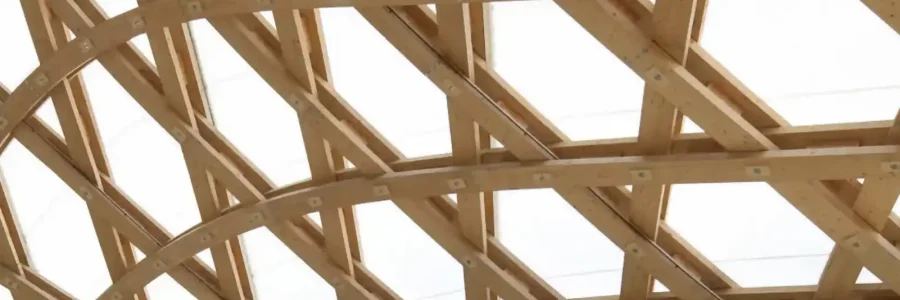
Capacity building on use of wood for buildings and public spaces
These 8 webinars focus on the use of wood in the building sector, covering the characteristics, development, production, and utilization of wood-based construction materials. It provides insights into various European structural wood types, their mechanical properties, strength and durability classes, and carbon sequestration.
Enroll
Learning Objectives
The discussion includes wood products like glulam, LVL, CLT, examining their impact and sustainability differences. Additionally, it explores best practices related to "use classes" for wooden components, optimizing structure service life, and addressing constraints in developing local forestry supply chains.
The training courses extends to national and European levels, covering structural and non- load-bearing applications, and the ecological considerations on adhesives and additives in wood-based composites.
Finally, training activities encompass sustainable forestry management tools and certifications aimed at reducing CO2 emissions through local forestry supply chains.
A good knowledge of the use of wood in the construction sector starts with a basic knowledge of some of the most important wood species in the building sector and a basic ability to identify them, at least in large homogeneous groups, together with the identification of the three main anatomical directions and corresponding anatomical sections. Identification is based on close examination of the wood species to observe their main anatomical features and organization. The analysis of the microstructure of wood goes beyond the narrow understanding of the anatomy and identification of wood and allows us to explain other important properties of wood for the construction sectors related to anisotropic behaviour: thermal conductivity, the response to moisture variations, mechanical behaviour, viscoelastic behaviour, shrinkage and swelling, reasons for deformations of workpieces and many others. It is important to know the different features of wood and how its behaviour with other natural elements such as water. "There is no wood without water": behind this simple rule there is much more to know, because wood is always strongly influenced by moisture, so that all its properties are affected by its moisture content and are conditioned by the relative humidity of the environment. For the designer it is important to know how water affects the raw material and its properties to design and develop a project.
Water is certainly not the only natural element that can compromise the quality of wood. In fact, being a biogenic material that offers ecological and sustainability benefits, it has weaknesses when it comes to its conservation. In the construction field, it is crucial to know the potential problems associated with the bio-deterioration of wood, its sensitivity to insects and fungi, as well as the optimal conditions for its conservation.
It is therefore important to consider its characteristics and mechanical properties: density, cracks, presence of knots, etc. etc. Certain properties may affect some structural functions, such as mechanical connections, wood-to-wood joints, connection points via bolts or pins. Wood construction is one of the keys to promoting sustainability. If we think of the construction sector, characterized by products with a long-life cycle, we can consider the CO2 naturally contained in these products as a permanent sequestration, since the time horizon exceeds 50 years and maybe even 100 years. Wood as a material is therefore analysed in relation to climate change, ecological transition, the wood supply chain and the environmental product declaration of certain wood derivatives for structural use.
The courses also focus on the classification and certification of wood characterised by wide variability in mechanical properties. Modern structural timber design systems, leading to the CE marking of structural products, are set up to work with characteristic strength values whose variability is under strict statistical control.
What are wood products? The course presents the most common types of wood-based structural products, explaining the general characteristics of each product, the types of use and their advantages and disadvantages. Special attention is given to glued laminated wood (GLULAM) and veneer laminated wood (LVL).
An example of a wooden construction product is brought to the attention, such as the structural system "load-bearing panels" that has proved successful because it allows to create very robust and resistant structures, is ideal for seismic design and is excellent as a carbon pool.
Effort
17.6 hours
Format
All the courses are delivered online in an asynchronous way, each of which can be followed independently.
For whom?
- Professionals: architects, engineers, designer, project managers
- Technicians and timber experts
- Building managers
- Companies
- Policymakers and public officers
- Institutions at local, regional, national and EU level
- Higher education and Post-graduates Students
- Higher education Professors
- Citizens
Provider
University of Florence
Prerequisites
None
Hub
South
Topic
- Bio-based
- Wood anatomy and anisotropy
- Moisture content and its effect on wood
- Wood sustainability
- Biodeterioration and wood protection
- Wood features and effects on mechanical properties
- Strength grading and CE marking of structural wood
- Wood products: plywood, LVL and glulam
- Cross Laminated Timber and Wood Engineered Products
